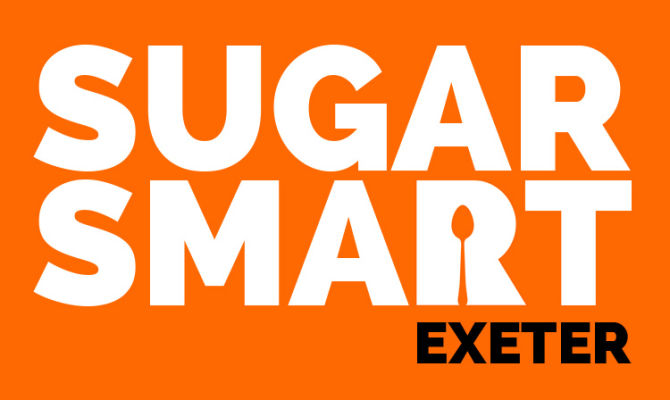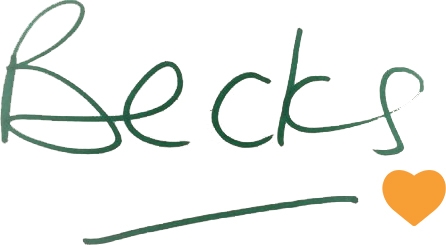
All the best challenges start on a Monday!
Join the Sugar Free September Challenge

Sugar Free September started on Saturday. Saturday! What sort of very tricky and time consuming let alone let's face it slightly depressing challenge starts on a Saturday?
Ben and I actually survived the weekend sugar free so we are feeling rather smug and 2 days into it BUT as it was a weekend I’m giving you the chance to start today as we all know that if we are going to start something then Monday is the day to do it right?
What are we actually doing?
We are taking part in #SugarFreeSeptember to try to reduce our sugar intake (or give it up completely if you are hardcore like Ben and me).
If you think you might be on for giving it a go here is the low down on what you need to know…..
What is sugar?
The word ‘sugar’ refers to a range of sweet-flavoured substances that come from a variety of sources. Sugar can be found naturally in things like fruit, vegetables, honey and milk. However, what most of us think of as sugar – the white, powdery stuff – is actually made from sugarcane (a grass) or sugar beet (a vegetable). The grass or vegetable is boiled up and turned into a liquid before being processed and turned into a powder that leaves all the nutrients of the grass/vegetable behind and only the sugar remaining.
What happens if we eat the right amount of sugar?
When sugar enters the body it makes its way into the bloodstream, providing us with energy. In response the pancreas releases a substance called insulin into the bloodstream, which ensures that sugar is released in the right amounts, keeping us balanced yet full of energy. Eaten in the right amounts, sugar is not harmful.
What happens if we eat too much sugar?
The body goes into overdrive with sugar flooding the bloodstream, which is why we might feel a burst of energy just after eating sugar. In response the pancreas over-produces insulin, which is why sometimes after a burst of energy we might get what’s sometimes called a ‘sugar crash’ - an unpleasant feeling of tiredness and irritation. This, in turn, means that we crave more sugar! Although it’s worth noting that more sugar won’t stop you feeling bad – try eating protein such as nuts or cheese instead!
Why is eating too much sugar bad for our health?
The body is unable to burn off excess sugar. Instead it stores it as fat, which can lead to people being overweight or obese, the consequences of which can be serious disease such as type 2 diabetes, heart disease and some cancers. Too much sugar can also cause a build-up of acids in the mouth, which can cause tooth decay. Our bodies also have to draw on the nutrients from the rest of our diet to process the excess sugar, which can affect our immunity, leaving us more prone to bugs and colds.
How much is too much sugar?
The recommended maximum daily allowances for children and adults are:
●● 4-6 year olds: 5 sugar cubes or 19g of sugar
●● 7-10 year olds: 6 sugar cubes or 24g of sugar
●● 11+ year olds and adults: 7 sugar cubes or 30g of sugar
Are some sugars OK to eat?
Yes. There is no need to worry about the sugars found naturally in fruit, vegetables, plain milk and plain yoghurt as the health benefits from the other nutrients in these foods outweigh the damage caused by sugar.
Fruit juices and smoothies are a special case. When fruit is blended or juiced it releases the sugars, which increases the risk of tooth decay. They should be consumed at a maximum of 150ml (one glass) a day and only during mealtimes, which lessens the impact of the sugar on teeth.
Which sugars should be avoided?
The real danger comes from what’s known as ‘added sugar’. This means sugar, most commonly table sugar (the white, powdery stuff), honey and syrups, which is added to food and drinks while they are being made. Some foods in which you might find added sugar are fizzy drinks, chocolate, cake and ketchup. However, added sugar is lurking in all sorts of surprising places so we need to make sure we know how to spot it.
How are we going to do that?
Know your labels. It isn’t always immediately obvious from the label if a food or drink has a lot of sugar in it but by learning a few simple rules it’s possible to know what you’re doing!
Rule no.1 – if the label says the food or drink has more than 22.5g or more of total sugar per 100g then it is HIGH in sugar. If it says it has 5g or less of total sugar per 100g then it is LOW in sugar. (Looking at content per 100g helps you to compare against different products)
Rule no.2 - Some packaging uses a colour-coded system that makes it easy to choose foods that are lower in sugar. Look for more “greens” and “ambers”, and fewer “reds”, in your shopping basket.
Rule no. 3 - read the ingredients. There are lots of different names for different types of added sugar. If it ends in OSE forget it!
Dextrose, fructose, glucose, isoglucose, levulose, maltose, sucrose, agave syrup, maple syrup, molasses, corn sugar are the most common ones.
If all that sounds a bit too daunting then here are a few healthy snack ideas to get you going:
Healthy Snack Ideas
- Baked crisps
- Small handful of unsalted nuts
- Pumpkin and sunflower seeds
- Pitta and hummus or sals
- Rice cakes with cream cheese and cucumber
- Celery sticks
- Homemade popcorn
- Unsalted ricecakes, corncake or oatcakes
We’ll be keeping you updated on how we are doing on our Facebook page and if you think you might like to give it a go you can find out all about the different challenges here. It’s never too late to get involved - Good Luck!





